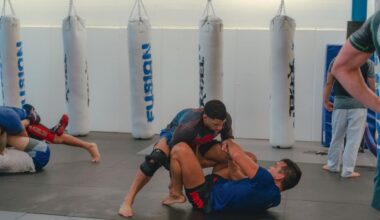If a question like “What is A Tortious Act in Divorce”? is asked, You can simply answer that a tortious act in divorce is a civil action brought by spouses or by a third party who has interfered with the marriage. These lawsuits may be founded on either intentional or negligent conduct, as is the case with most torts. Marital rights and privileges are often suspended for the duration of the legal process.
Tortious definition
A domestic or marital tort is a wrong committed by ex-spouses. The doctrine of spousal immunity has now been abolished in the majority of jurisdictions, allowing spouses (often women) to file marital torts (mostly personal injury lawsuits) in connection with domestic abuse. Additionally, marital torts can be filed in connection with purposeful or careless activities, such as the spread of sexually transmitted diseases, mental anguish, and harm, slander and libel, as well as the misappropriation of communal property
As with all torts, there must be a breach of a duty owed to the plaintiff in a marital tort. Typically, this duty must arise by operation of law rather than simply through an agreement between the parties.
What is A Tortious Act in Divorce
A tortious act is an act that causes harm to someone or infringes upon their rights is known as a tort in civil law. Therefore, the word tortious designates something that is connected to a crime.
The term “tortious action” refers to any behavior that could give rise to a claim based on a tort, including but not limited to the torts of carelessness, trespass to chattels and/or other property, deception, conversion, negligent misrepresentation, and public nuisance.
Tortious refers to a civil action for damages for harm, demise, or loss to a person or property that is not a civil action for damages resulting from the breach of a contract or other agreement between individuals or governmental bodies.
Tortious is wrongdoing by someone who is required by law to act with a specific level of care for another that results in harm to that person and entitles them to compensation in a civil lawsuit for damages.
What is a tortious act?
A tortious act is a wrongdoing that causes harm to another person, their property, reputation, or something similar, and for which the victim is entitled to compensation. It does not include a breach of contract or trust. In other words, a tort is a crime that, while not criminal in nature, may entitle the victim of the crime to compensation. Tort law governs all personal injury claims and other civil actions that aren’t for contract breaches.
A tort is a civil wrong that makes a victim suffer loss or harm and makes the person who committed the tort legally liable.
A tort is an act against another that results in legal repercussions. In these circumstances, the victim may file a lawsuit to recover damages, or compensation, for what transpired. This is a common occurrence in personal injury lawsuits when the claimant sues the defendant to recover costs associated with their damages, including losses, injuries, and more.
Tortious Act Examples
Below are a few types and examples of tortious acts
Deliberate torts
When a person or organization deliberately participates in behavior that harms another party, the behavior is known as an intentional tort. For instance, intentionally striking a person during a fight would be deemed a battery, whereas inadvertently hitting someone would not be regarded as “intentional” because there was no intent to strike the person (however, this act may be considered negligent if the person hit was injured).
Although an intentional tort may appear to fit the definition of a criminal case, there are significant distinctions. A wrongdoing that harms or obstructs society’s interests is referred to be a crime. In contrast, intentional torts are wrongdoings that harm or obstruct an individual. Examples of international tort are assault, battery, false confinement, trespassing on land, and conversion.
Assault:
In tort law, assault indicates that a person threatened or made an attempt to hurt someone else without actually touching them. Assault can occur without physically touching anybody; this is how it differs from the battery, which is defined below.
Battery:
While assault is the threat of violence, the battery is when the threat is carried out by making physical contact with the victim. The interaction could be hurtful or disrespectful. The battery is a crime that carries both civil and criminal penalties. Intention, contact, and harm—which can be either emotional or bodily in nature—are the three components that must be present for the civil battery.
False confinement:
False imprisonment is when someone restricts another person’s freedom of movement. In order to have a claim, the plaintiff must demonstrate wrongful and willful detention without consent. This can happen in hostage situations or when a citizen’s arrest goes wrong. False incarceration can occur physically (e.g., through the use of restraints) or unreasonably (through duress or coercion).
Trespassing on Land:
This is when someone purposefully enters another person’s property. Even kids who cut through a yard to get to school are subject to this rule. In such situations, the plaintiff must demonstrate that the trespass occurred without their consent. The fact that postal employees and police officers already have implicit permission to be on a property means that this does not apply to them. The majority of trespass cases that end up in court include property damage. However, the plaintiff may get an injunction if there is no damage and they merely want the trespassing to end.
Conversion:
When a person wants to recover the value of the property that was stolen without their consent and cannot be returned, conversion takes place (for example, it is used up or something else happens to it in the process.) A conversion tort may be justified in cases when the property is sold, lost, utilized inappropriately, or is destroyed or transformed. Be aware that conversion can even apply to the gas in a lawnmower that a neighbor has illegally borrowed. This rule applies to physical, tangible properties like a car, bicycle, or electronics.
When a defendant behaves unreasonably and intentionally causes emotional anguish, this is known as intentional infliction of emotional distress. Intentional infliction of mental distress can take the form of, among other things, threatening violence against someone or their loved ones or abandoning them in a hazardous situation and causing them great pain.
Absolute liability
Strict responsibility torts are the last category. Strict, or “absolute,” liability refers to situations in which the perpetrator of a wrong can be held accountable for damage even in the absence of evidence of negligence or direct culpability. If a case involves a strict liability tort, the victim may be entitled to compensation even if the at-fault person took all reasonable precautions and didn’t mean to cause them harm. The victim just needs to demonstrate that the other person’s acts caused them harm. What counts is whether a decision was made that ultimately hurt another individual.
To have the law enforced in cases like these, the affected customer just needs to demonstrate that their harm was brought on directly by the goods in question. examples of strict liability torts are abnormally dangerous activities and animal attacks(dog bites)
Tort law is involved when an action is unusually risky. The Restatement of Torts defines it as an action that, even when reasonable care is used by all parties, (1) is not commonly performed, and (2) causes a foreseeable and highly considerable risk of physical harm. A person will be held strictly liable for any physical injuries caused by their actions if a court determines that they engaged in an excessively dangerous activity.
In stark contrast to the alleged “one bite,” rule is the strict liability rule. According to that law, a dog owner is deemed to have no knowledge that their pet is potentially harmful unless the animal bites someone or otherwise displays violent tendencies. Pet owners aren’t held accountable for any injuries until they become aware of the animal’s tendency for aggression, which is frequently not until after the dog attacks someone for the first time. Only dog bites may be covered by strict liability rules, while they may also occasionally cover other sorts of assaults like having nails pierce a victim’s skin or having a dog pounce on them and knock them to the ground.
Negligence
Negligence is the most common type of tort. These cases are deliberate, but they are caused when an individual acts carelessly resulting in the injury of another. An example of negligence is a car accident.
Car accident cases are by far the most common cases we see in our personal injury practice. The effects can be devastating – physically, emotionally, and financially. And sadly, without a dedicated injury attorney, victims don’t receive the full amount of damages they are entitled to
Committed A Tortious Act?
While the other State is held accountable not for having actually committed the wrongful act but for its causative effects, it is that State who conducts an internationally wrongful act, but in the instance of coercion wrongfulness could be excluded.
In order to obtain information or a confession from the subject of the torture or a third party, to punish the subject for an act they have committed or are suspected of having committed, or to force them to perform or refrain from performing a particular act, a public employee who does so in the course of their official duties commits the crime of torture.








